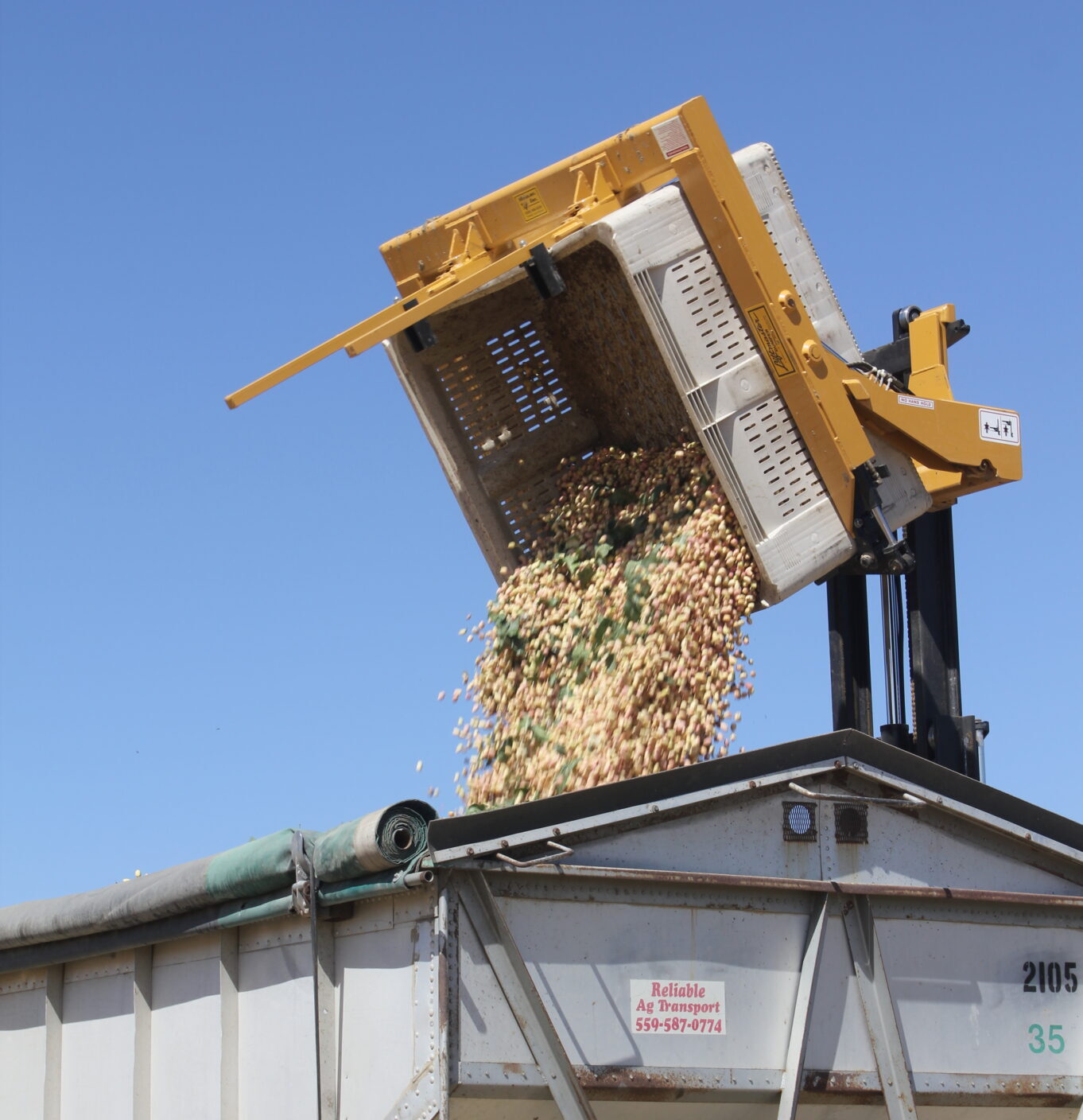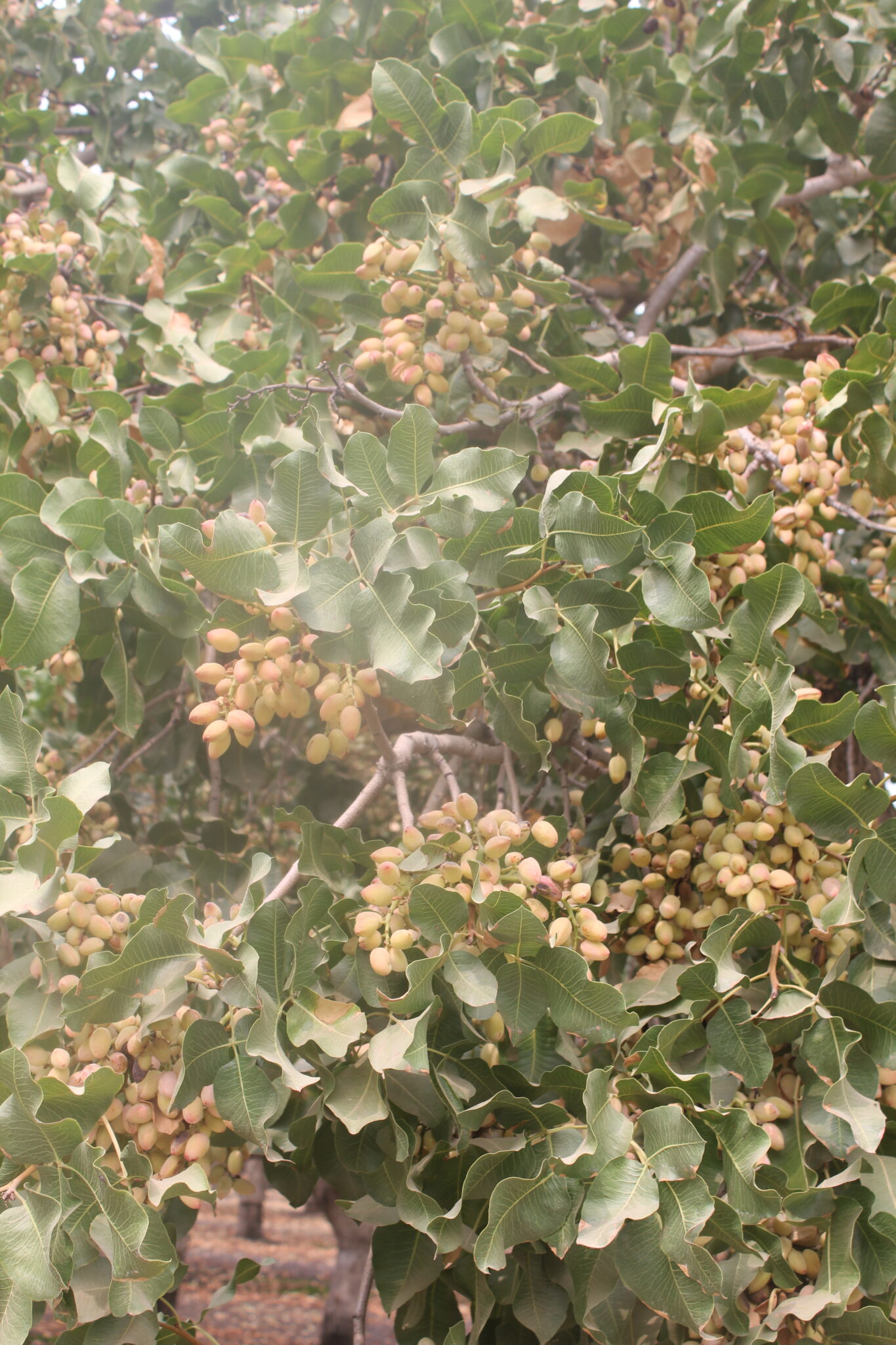
Given this year’s dry spring and summer, pistachio orchards may need some extra TLC postharvest. Water, nutrients and pest control are the focus.
Re-hydrating trees, if possible, then application of organic acids and soil amendments as soon as possible after harvest is recommended.
The organic acids, humic acid and fluvic acid, are the final breakdown constituents of the natural decay of plant and animal materials. Organic acid applications are a way to provide plants and soil with a concentrated dose of essential nutrients, vitamins and trace elements.
Moving Nutrients
Water is key to moving the nutrients through the soil to the tree roots, said Rich Kreps, CCA and SSp. with Ultra Gro.
Compost applications in pistachio orchards are common after harvest is complete, but without water and incorporation into the soil, the materials will take too long to break down and become available to the trees.
Kreps advises delivering organic acids via irrigation systems as soon as “the last nut is shaken from the tree.” These materials can also be spread on the orchard floor in granular form, Kreps said, but they must be incorporated into the soil. With flood systems, the granular materials or liquid forms can be applied to the soil prior to running water into the orchard.
Soil amendments, including gypsum, lime and sulfate of potash (SOP), are applied postharvest and should also be incorporated into the orchard soil after application. Kreps noted that SOP is usually banded on the berms.
“The trees are depleted after harvest and should be refreshed as soon as possible,” Kreps said. “Don’t wait until the end of October.”
Water Needs Postharvest
Multi-year pistachio deficit irrigation research by UCCE Farm Advisor Emeriti David Goldhamer and Bob Beede found significant irrigation water could be saved by strategically irrigating pistachios.
Approximately 10 inches of irrigation water can be saved during the season by noting critical water need times. Critical periods when pistachio should not be under-irrigated are from nut fill to hull split, which is July 1 to September 15 in the San Joaquin Valley, and from bloom to end of shell expansion, which is April 1 to May 15.
Deficit irrigation of pistachio is possible during shell hardening with a 50% reduction and postharvest with a 70% to 75% reduction.
Mae Culumber, UCCE nut crops advisor in Fresno County, notes that compared to almonds, less is known about water needs of pistachio trees. The reduction in applied water postharvest is not known to affect yield in the Kerman variety, but data is still needed to determine the effects of deficit irrigation on the Golden Hills and Lost Hills varieties.
When managing irrigation, it is important to note that those two varieties harvest two weeks earlier than Kerman.
For postharvest deficit irrigation, Culumber said to keep in mind the different maturity timings for pistachio varieties. Soil texture also plays a role in irrigation. Heavier soils will hold moisture longer than sandy soils. As long as green leaves remain on the tree, Culumber said, it is ideal to maintain moisture above 50% of total available water in the top two to three feet of soil. However, deficit irrigation postharvest may benefit pistachio trees. Culumber said that research on one-year-old potted trees in a controlled greenhouse setting has shown that water-stressed trees can withstand early frosts. Stressed trees in the fall, she explained, may produce more soluble sugars than well-watered trees. The sugar acts to protect the cells from frost damage, she explained.

Pest Considerations
Orchard sanitation is another postharvest concern, but Integral Ag Services Crop Advisor Justin Nay said mummy removal is more about the ground than the tree.
“There are many more mummies on the orchard floor per tree than there are in the tree,” he said.
Occasionally, growers will need to do a mummy shake postharvest if numerous nuts are left after harvest, but Nay said most pistachios with kernels will just fall out of the tree in wet or windy conditions. Blank nuts left on the tree are generally removed during pruning operations during the winter months.
Nuts on the ground can be shredded to destroy overwintering sites for navel orangeworm. Wet conditions in the fall can also hasten decay of mummies.
UC IPM guidelines for postharvest advise grade sheets from the processor be analyzed. The results and orchard monitoring should be used to plan pest control for the next season.
Monitoring for soft scales on one-year-old wood should be done as well as monitoring for parasite levels. White aggregations of mealybugs on the trunk and main scaffolds of the trees should be marked for treatments the following June.
Postharvest is also time for the fall weed survey. This can be used to direct spring pre-emergent herbicide applications and to develop a weed control program for the following season.
Trees that receive sufficient water and have nutritional needs met postharvest are in a better position for meeting yield potentials the next growing season.















